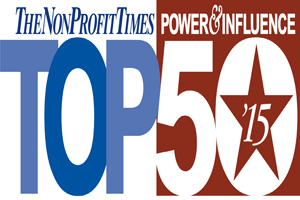If Americans don’t have much in the way of retirement savings, how much disposable income could they possibly have for future giving to charity? A number of recent surveys spell out a potentially grim outlook for the average American when it comes to savings and retirement:
• 62 percent of Americans have less than $1,000 in their savings accounts;
• 21 percent don’t have a savings account; and,
• 62 percent of Americans have no emergency savings for things such as a $1,000 emergency room visit or a $500 car repair.
The results are from a survey of more than 5,000 adults by Google Consumer Survey for GOBankingRates.com and another of 1,000 adults by bankrate.com. The average retirement age in the United States is 63, with the average length of retirement at 18 years, according to U.S. Census data. The average savings of a 50-year-old is $42,797 and the average net worth of a 55- to 64-year-old is $45,447. Four out of five people ages 30 to 54 believe they will not have enough money put away for retirement.
If Americans don’t have enough cash on hand or retirement savings, will charities be bumped off donors’ spending list?
The recent survey data isn’t necessarily a reason to sound the alarm about a grim future for charitable giving, according to Andrew Watt. The president and CEO of the Association of Fundraising Professionals (AFP) in Arlington, Va., instead wonders how today’s data differ from a decade or two ago. “Individuals have been undercapitalized for a very long time,” he said. “For every amazing 23-year-old who starts investing for retirement, there are probably 10 to 15 or so who don’t,” Watt said.
While the survey data at first blush don’t look good, Watt said it’s important to understand where it comes from, where the trends are heading, and how it compares to previous decades.
The most recent year for which data are available (2014) saw $360 billion in charitable giving in the United States, the highest level in decades and the fifth consecutive year that giving increased — a good sign to Watt. Although giving is increasing, it’s on the back of a rising tide, which it’s always done, he said. The proportion of giving to GDP has remained around 2 percent for the last half-century. “We haven’t moved the needle at all you could argue,” he said.
For Watt, the starting point is the amount people have saved but also important is if their level of community engagement remains the same or is it shifting. “It’s hard to determine whether it’s a significant factor in the future. The true barometer of whether people are engaging in social discourse, effectively, has to rest in the amount of personal engagement they have with it more than perhaps the money they’re putting in,” he said.
Nonprofits don’t just depend on donors’ money but also their time and networks, Watt said, getting out in the community to promote what charities are doing. “If that’s not there, awareness levels will drop off, eventually maybe see levels of giving drop,” he said.
Savings and its impact on wealth is important, but it’s not everything, according to Amir Pasic, the Eugene R. Tempel Dean at Indiana University-Purdue University’s Lilly Family School of Philanthropy in Indianapolis, Ind. He pointed to the school’s research on how women give to charity as one reason to keep a close eye on giving patterns as well as demographics. For instance, female Baby Boomers give significantly more than their male counterparts in the same economic situation, he said. There might be some tactics that nonprofits can learn to emphasize such demographics, he added.
“We know that giving is strongly correlated with wealth but at the same time there’s an important difference between median experience and the average. That distribution of wealth is very skewed. The average tends to be much higher than the median, and distribution of giving is very skewed as well,” Pasic said. “The typical person might be struggling in retirement — certainly not a good thing — but that doesn’t mean aggregate giving will be reduced.”
Pasic said it’s important for fundraisers to realize that people’s wealth might be tied up in other things, such as their homes, while they tap savings to sustain themselves. Those other aspects of wealth might provide some opportunities for planning giving among folks with low savings but wealth tied to their homes. “Make sure if there is wealth in the home, consider that as an opening. It’s not savings per se but it is wealth,” he said. Smaller nonprofits that have much shorter operations horizon might have more difficulty in waiting for a planned gift.
The percentage of Millennials surveyed who said they had $10,000 in a savings account was significantly less than other demographics. While one in five seniors (age 65 and older) had $10,000, the rate among those 35 to 64 was about 16 to 17 percent but it dropped to 12 percent among older Millennials (25 to 34) and 7.5 percent among young Millennials (18 to 24).
Comparing generations at the same age, Pasic said there is some tentative data that suggest Millennials are only slightly behind Boomers when one controls for the economy. Millennials entered the workforce in the midst of the Great Recession and it might take some time for them to catch up. Boomers also didn’t have the onerous student loans that Millennials do, he said.
“The student loan burden has grown a lot. We’ll see exactly how that plays out. There’s not really a precedent in previous generations,” Pasic said.
Nonprofits should monitor the situation and figure out strategies of what to do, Pasic said, but the key is to look at both wealth and income. “It’ll be interesting to see, I don’t know whether that bodes for more consolidation in the sector or a new feature of the environment,” he said.
Watt argued that charities must improve their communications with donors and potential donors. “One of the things we’re bad at is communicating what it takes to get our job done to achieve impact as organizations,” he said. “We’ve become very complacent and used to the idea that someone is a lifetime donor to organization X,” he said, but people want to see a cure to breast cancer; they’re not necessarily loyal to an organization.
For donors looking to help Syrian refugees, Watt said they don’t go to United Nations-related charities but look for organizations “that appear to be effectively addressing the issues they care about. If you ignore that, I think we’re facing a lot of trouble,” he said.
“Not only do they want to support organizations and see things happening, but they want to be more involved in it. It’s not enough, to say we’ve got this project or program, we think you should support it. Turning it around, we see what you want to achieve, see what trying to get to and help achieve that,” Watt said. “We’re not good at communicating in that way. I’m not quite sure why because ultimately fundraising is about communication, helping people understand the message.” NPT











